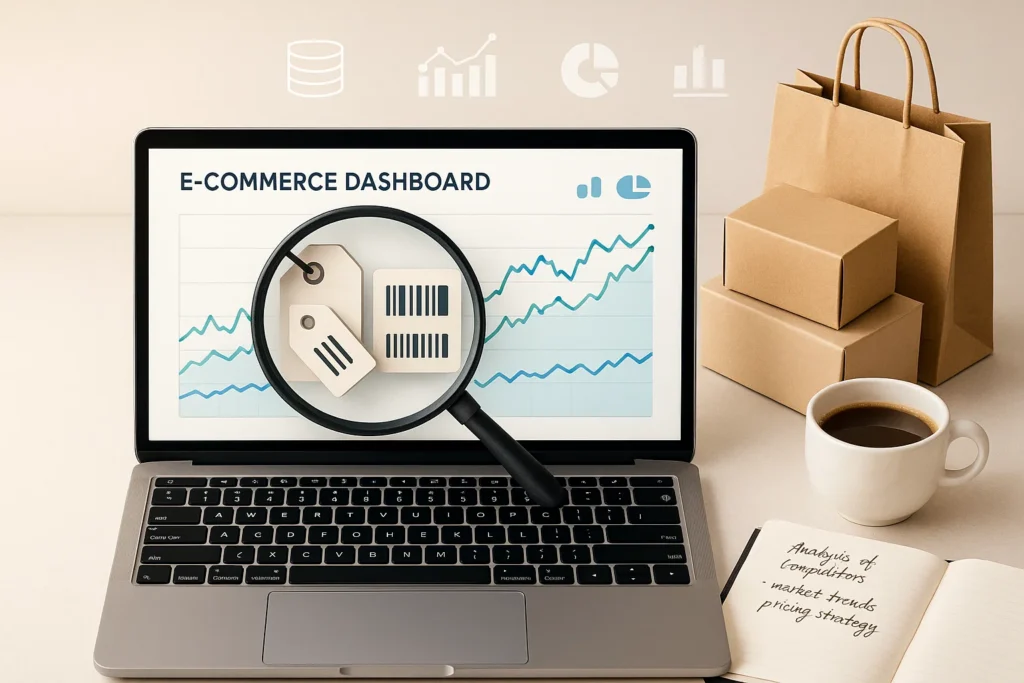In today’s hyper-competitive e-commerce market, staying ahead of your competitors isn’t just a smart move—it’s survival. One proven way to win this pricing battle is to Price Scrape. But what exactly does it mean to Price Scrape, why is it essential, and which tools make it easy and effective? Let’s break it down step by step.
Table of Contents
Why Price Scrape is a Must-Have Strategy
Imagine walking into a supermarket that never changes its prices. Sounds unrealistic, right? In the digital marketplace, the same logic applies. Competitor prices shift daily—sometimes hourly. Without a robust Price Scrape strategy, you risk falling behind.
How E-Commerce Businesses Use Price Scrape
Let’s begin with a story. Meet Sarah, an online electronics retailer. Two years ago, she sold gadgets at fixed prices. Her sales dropped because her competitors adjusted prices daily. She knew she needed a smarter plan. That’s when she discovered how to Price Scrape and automate price tracking.
Within months, Sarah turned her stagnant store into a dynamic pricing powerhouse. Her sales increased, profit margins improved, and she reclaimed her market share. Her secret? The right Price Scrape tool.
Price Scraping Tools
Before we jump into our carefully curated list, here’s the big picture: not all Price Scrape tools are created equal. Some are simple browser plugins. Others are complex enterprise-level solutions.
Top Tools to Price Scrape Like a Pro
Below are some of the most popular and effective solutions for anyone who wants to Price Scrape their way to a winning pricing strategy.
DataHen Tailor-Made Price Scrape Solutions
Pros
- Custom-built scrapers to match specific business needs
- Handles dynamic websites with complex structures
- Automated updates and technical support
- Easy integration with existing systems
Cons
- May be pricey for small companies
- Takes time to configure
DataMiner Easy Browser-Based Price Scrape
Pros
- Beginner-friendly, no coding needed
- Runs directly in your browser
- Customizable extraction rules
- Free plan available for basic tasks
Cons
- Limited for large or complex sites
- Not as powerful as custom solutions
WebScraper.io Simple Yet Effective
Pros
- Great for non-technical users
- Handles dynamic pages with AJAX
- Schedule scraping tasks automatically
- Free trial to test its features
Cons
- Free version is limited
- May need tweaking for complicated sites
Elbuz Price Scrape System for E-Commerce
Pros
- Monitors prices and product content
- Automates updates and uploads
- Alerts for competitor changes
- Generates detailed reports
Cons
- Can be buggy
- High license costs
- Premium features cost extra
Datacol Try Before You Buy
Pros
- Test features before purchasing
- Advanced verification of data
- Exports data in CMS-friendly formats
Cons
- Setup can be complex
- Expert configuration may cost more
A-Parser Speed and Efficiency
Pros
- Extremely fast scraping performance
- Low hardware requirements
- Supports scheduled tasks months ahead
- Custom scraper development available
Cons
- Pricey for smaller operations
- Paid updates required
Price Control Cloud-Based Price Scrape Power
So, how does a cloud-based powerhouse like Price Control fit in?
Advantages:
- Combines monitoring, market analysis, dynamic pricing, and brand protection
- Tracks competitors, promotions, reviews, and stock
- Ensures retail partners stick to RRP
- Helps detect counterfeit or unauthorized products
- Flexible, customizable, and integrates via API
Disadvantages:
- Costs start at $119/month—can be high for new businesses
- Takes time to learn due to its rich feature set
Compare and Contrast Different Price Scrape Tools
When you compare these tools side by side, the differences become clear. If you’re a small business, browser-based solutions like DataMiner or WebScraper.io can be a great starting point. They’re budget-friendly and easy to use. For larger brands needing robust solutions, Price Control or DataHen might be better, offering advanced automation, reporting, and integration.
Guide to Getting Started
Ready to get started? Here’s a quick step-by-step plan to launch your Price Scrape strategy:
- Identify Your Goals
Decide if you just want to monitor prices or automate dynamic pricing. - Pick the Right Tool
Compare features and pick what matches your size, budget, and needs. - Set Up and Test
Configure your tool. Test it on a few products. - Monitor and Adjust
Use reports and alerts to tweak your pricing as needed. - Scale Up
Expand monitoring to more products and competitors.
Smart Price Scrape
Still wondering if a Price Scrape tool is worth it? Consider this: companies that use dynamic pricing powered by data tend to outperform competitors who rely on guesswork. Scraping competitor prices allows you to react quickly and make data-driven decisions.
Case Study A Real-World Price Scrape Success
Take an online fashion retailer that used Price Control to track thousands of competitor products. Within six months, they adjusted prices dynamically, saw a 23% increase in conversions, and protected their brand from unauthorized sellers.
Common Questions About Price Scrape
What is a Price Scrape tool?
A tool that automatically collects pricing data from competitors’ websites.
Is Price Scrape legal?
Yes, but always follow local laws and terms of use.
How often should I Price Scrape?
It depends on your market. Some businesses scrape hourly, others weekly.
What data can I get?
Prices, stock levels, reviews, promotions, and more.
Final Thoughts on Winning the Pricing Game
The digital marketplace waits for no one. If you want to stay competitive, start using a Price Scrape strategy today. Choose the right tool for your business size and needs, test, adapt, and watch your sales grow.
With tools like DataHen, Price Control, and WebScraper.io, your pricing strategy will never be left to guesswork again. So, are you ready to Price Scrape and claim your spot at the top?

